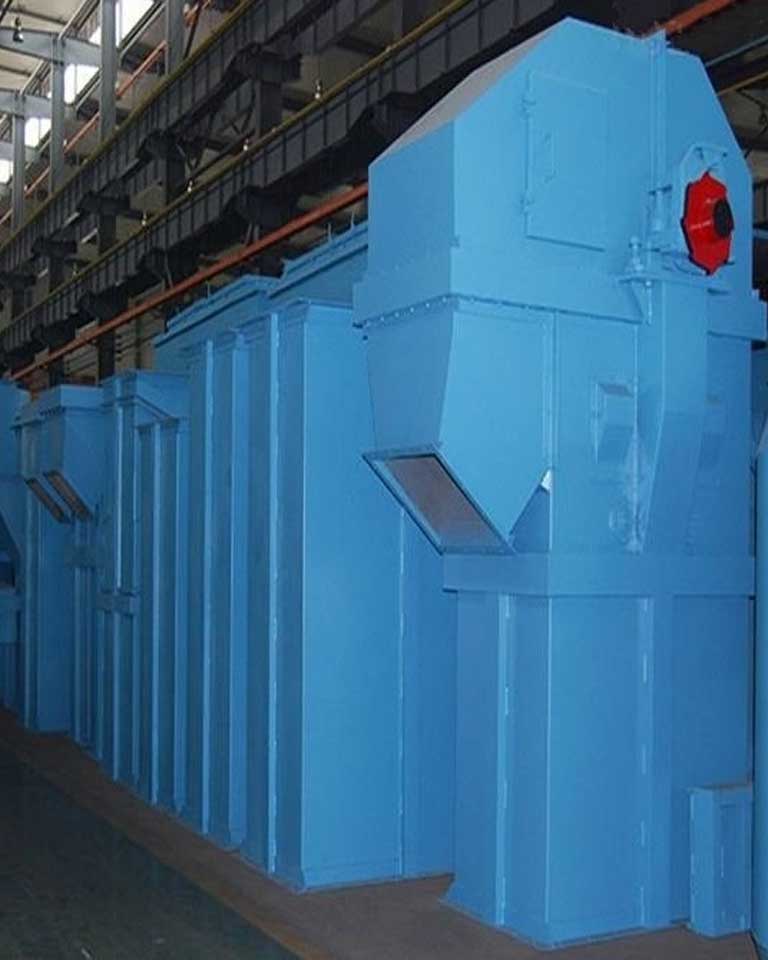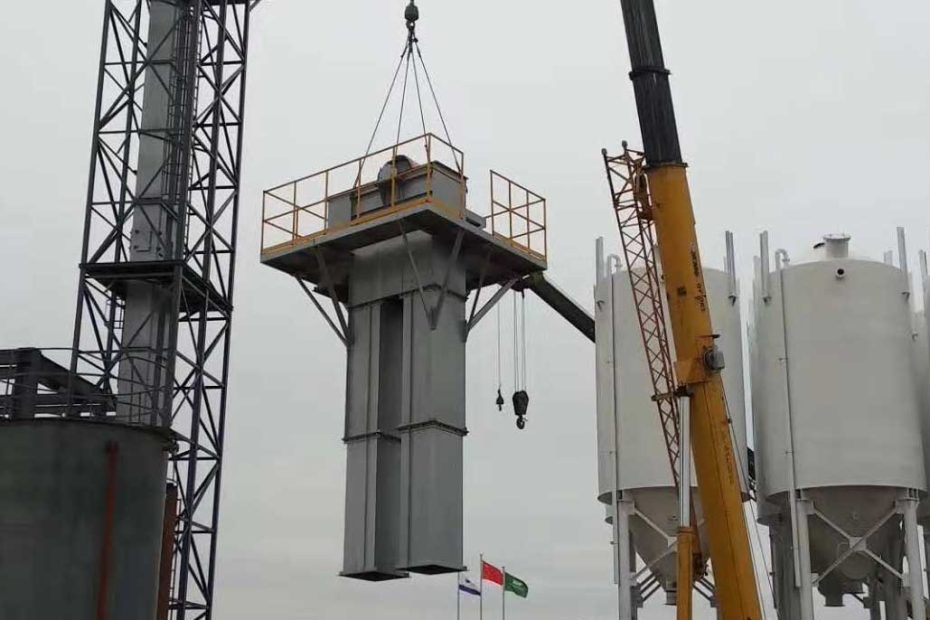Bucket elevator is a continuous conveying machine that uses a series of hoppers evenly fixed on the endless traction member to lift materials vertically. The equipment has simple structure, high conveying efficiency, high lifting height and stable operation.
The bucket elevator is suitable for lifting from a low place to a high place. After the supply material is put into the hopper through the vibrating table, the machine automatically and continuously runs upwards.
Bucket elevator is a vertical conveyor that uses buckets to convey materials. It is an essential piece of equipment in many industries such as grain processing, mining, and construction.

Ten operating procedures for bucket elevators
To ensure the safe and efficient operation of a bucket elevator, the following top 10 operating procedures should be observed:
- Always follow the principle of “starting empty, stopping empty” when operating the machine. That is, start the machine and wait until it runs smoothly before feeding material, and empty the machine before stopping it.
- Perform routine checks before starting the machine, such as checking fasteners, safety protection, and lubrication.
- Feed material evenly during operation and ensure that the discharge pipe is unobstructed. If a blockage occurs, stop feeding material immediately, stop the machine, and remove the blockage by opening the machine seat plate. (Note that hands should not be inserted directly into the base at this time.)
- The bucket belt should be in the middle position of the drum during normal operation. If there is deviation or the bucket belt is too loose and causes collision or friction with the drum, it should be adjusted in time through the tensioning device.
- Prevent large foreign objects from entering the machine seat to avoid damaging the bucket and affecting the normal operation of the bucket elevator. When conveying materials that have not undergone preliminary cleaning, an iron grid should be added to the feeding port to prevent fiber impurities such as straw, wheat stalks, and ropes from entering the machine seat and causing entanglement and blockage.
- The following issues should be considered during equipment operation:
a. Adjust the tension screw of the machine seat and the bucket belt regularly to eliminate the phenomenon of bucket belt deviation and rubbing against the edge.
b. Observe if there is abnormal noise, and stop the machine and remove the cause timely when it is found.
c. Check the bearing temperature. If it exceeds 40℃, stop the machine to check and remove the cause. - In the event of a sudden shutdown, empty the accumulated material in the machine seat before restarting.
- Regularly check the tension level of the bucket belt and the connection between the bucket and the bucket belt. If loosening, falling off, bucket tilting, or damage is found, timely maintenance or replacement should be conducted to prevent more serious consequences. Every year’s major overhaul should conduct a comprehensive inspection, tightening, or replacement of parts.
- Calcium-based grease is used to lubricate rolling bearings. Change the lubricating oil once a month and disassemble and clean it, and change the lubricating oil during annual maintenance.
- If the machine stops for more than half a month, open the movable door of the machine seat, remove the stored material inside, and then restart the machine.
Final Words
Observing the top 10 operating procedures for bucket elevator is crucial for ensuring its safe and efficient operation. Regular maintenance and inspection are also essential to keep the equipment in good condition and extend its service life.
